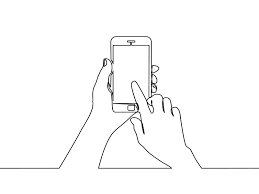What if you could turn patient curiosity into real-time conversions—while educating them better than ever before?
That’s exactly what interactive content is doing in today’s healthcare marketing strategies. A leading immersive experience design agency in South Florida, can evidently showcase to you how medical brands are transforming traditional campaigns with smart quizzes, AR-driven simulations, and diagnostic tools that captivate and convert.
But here’s the catch—most medical brands are still missing out on this game-changer.
Why Is Interactive Content Reshaping Medical Marketing?
Patients today aren’t just looking for information. They want clarity, confidence, and control. Interactive content gives them that in real-time. Instead of reading lengthy FAQs or static blog posts, imagine engaging with a “Symptom Checker Quiz” or a “Post-Surgery Recovery Tracker” that adapts to your input.
This level of customization doesn’t just inform—it involves.
According to DemandGen’s 2024 report, 66% of B2B buyers say they prefer interactive content because it’s more engaging, personalized, and educational.
Now imagine how this applies to patient journeys, from awareness to decision-making.
How Are Leading Medical Brands Using It?
Let’s look at how top medical players are changing the game.
| Interactive Tool | Use Case in Medical Marketing | Impact |
| Health Risk Calculators | Assess diabetes, heart risk, or BMI levels | Higher dwell time, better lead quality |
| Augmented Reality (AR) | Visualize surgeries or anatomy in 3D | Boosts trust and patient confidence |
| Chatbots & Simulations | Guide post-care instructions or pre-checkups | Improves engagement and retention |
A leading medical creative agency in South Florida recently implemented an AR experience that let patients explore orthopedic implants in 3D before surgery—resulting in a 23% increase in pre-consultation bookings.
Can Interactive Content Really Boost Conversions?
Absolutely—and not just by a little. Interactive tools drive up to 2X more conversions compared to static assets. Why? Because users stay longer, engage deeper, and remember more. These tools nudge users further down the funnel without selling—they educate.
But here’s the cliffhanger—are you integrating interactivity the right way, or just throwing tools into the mix without strategy?
That’s where the difference lies. Strategy-first execution—blending UX, tech, and storytelling—is what turns gimmicks into growth.
Which Tools Can Your Brand Start With?
You don’t need to develop a full AR suite on day one. Start with these easy-to-deploy interactive formats:
- Quizzes: Ideal for early funnel education (e.g., “What’s Your Sleep Score?”).
- Calculators: Great for diagnostics or treatment ROI.
- Interactive Videos: Add click-to-learn elements for deeper insight.
- Virtual Reality Tours: For facilities, clinics, and procedure overviews.
Pair these with your brand strategy, and you’ve got content that doesn’t just talk—it converts.
What’s Next for Medical Marketers?
The next frontier is personalized, AI-powered interactivity. Tools that learn from user behavior to deliver smarter follow-ups, better segmentation, and more intuitive content journeys.
But here’s another cliffhanger—do your internal teams or current partners have the creative firepower to scale this?
That’s where high-value agencies come into play. A leading immersive experience design agency in South Florida, don’t just “add” interactivity—they design ecosystems around it. They align content, product, and brand to make your patient experience unforgettable and profitable.
Final Thought: Are You Building or Just Informing?
If your content is only informing, you’re leaving massive engagement and conversion potential on the table. Interactive content lets you build two-way conversations, increase trust, and help patients take action confidently.
Looking to integrate this into your brand’s content ecosystem? Let’s talk about how interactivity can drive your next-level growth.



